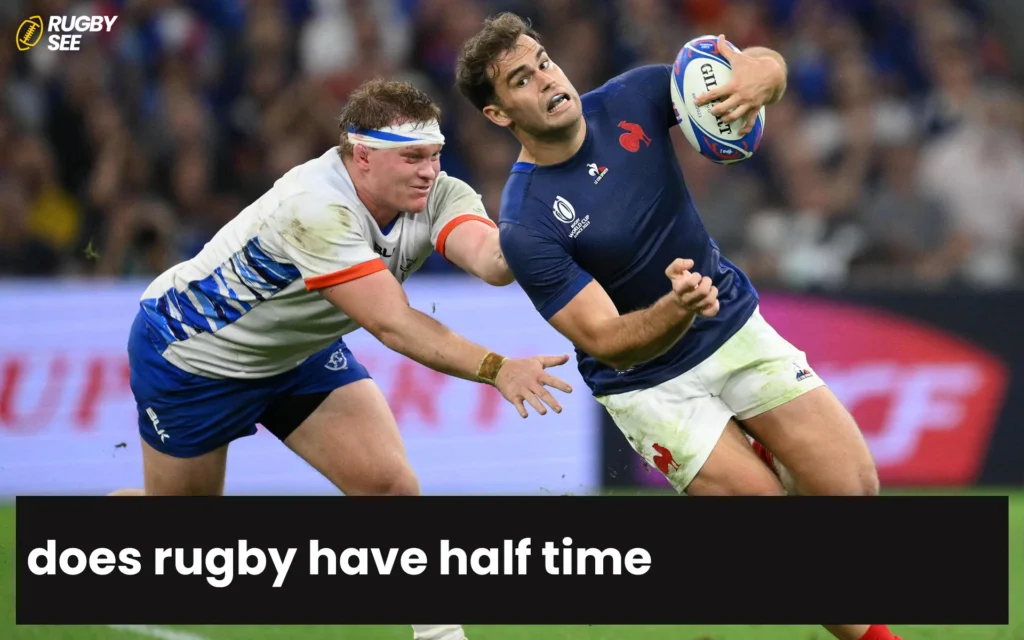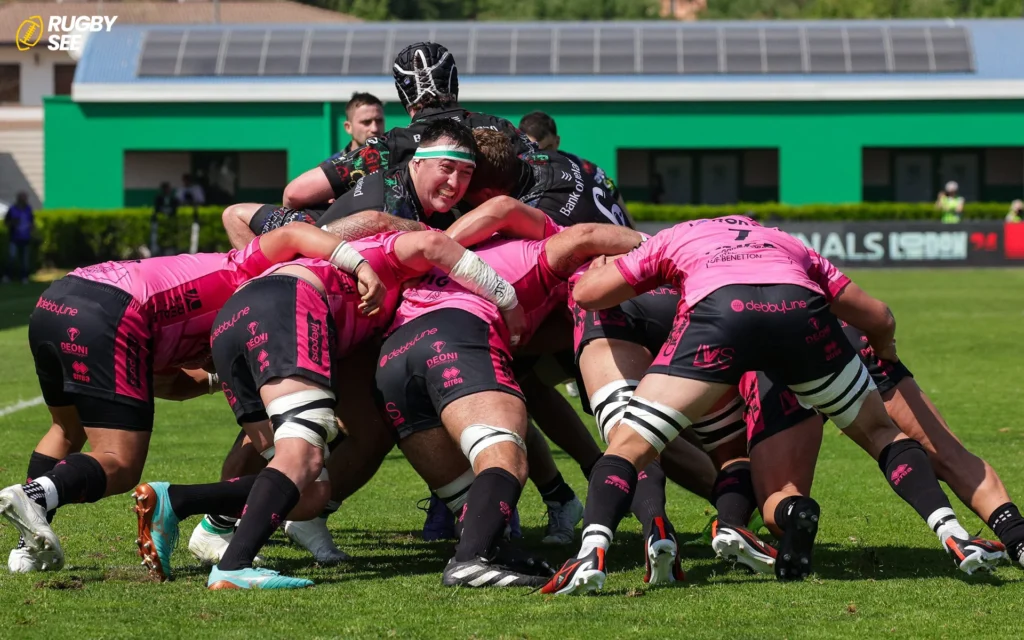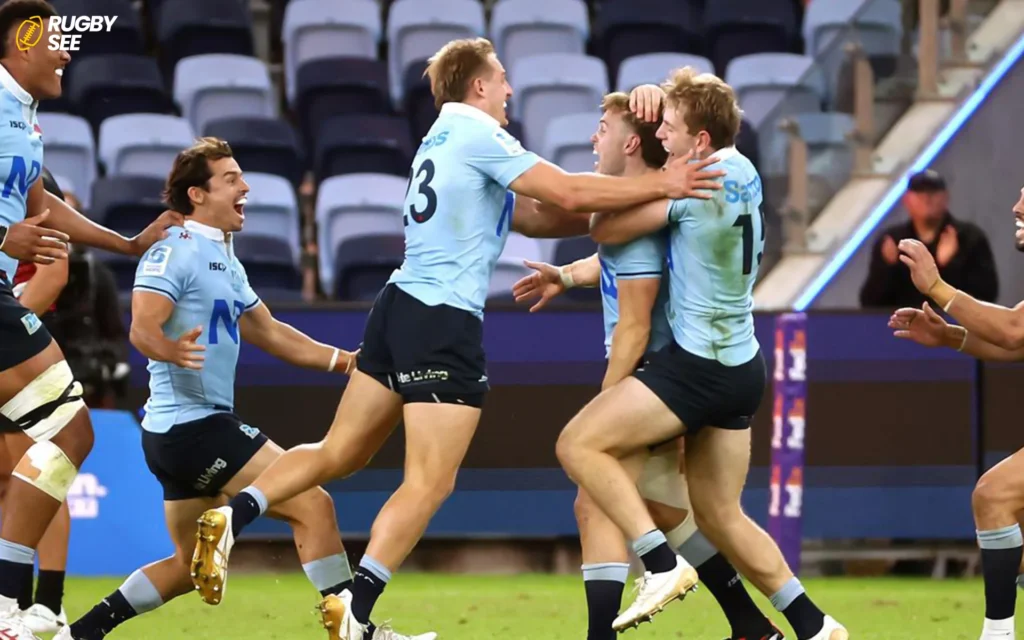Rugby, a sport known for its intense physicality and strategic depth, also incorporates a critical pause in the action known as half-time. This intermission is not merely a break for players to catch their breath but a pivotal period that can influence the outcome of the game. Understanding the role and importance of half-time in rugby provides insights into how teams manage game dynamics, player welfare, and strategic adjustments.
What is Half-Time in Rugby?
Half-time in rugby refers to the interval between the two halves of a match. In both union and league formats of rugby, the game is divided into two halves, each typically lasting 40 minutes, with a half-time break in between. This break usually lasts about 10 to 15 minutes, depending on the level of play and specific tournament rules and if you want to know about getting big in Rugby read How do rugby players get big arms.
The Purpose of Half-Time
Physical Recovery: Rugby is a demanding sport that requires high levels of physical exertion. The half-time break gives players a much-needed respite to recover physically. This downtime is crucial for reducing fatigue, replenishing energy stores with quick carbohydrates, and hydrating to maintain peak performance levels in the second half.
Tactical Adjustments: Half-time provides a strategic pause where coaches can analyze the first half’s play and adjust strategies accordingly. This might involve changing tactics to exploit the opponent’s weaknesses observed during the first half or adjusting the team’s approach to defense or attack based on the scoreline and the flow of the game.

Psychological Reset: The mental aspect of rugby is as demanding as the physical. Half-time allows players and coaches to mentally regroup, refocus, and motivate. Whether a team is leading, trailing, or in a tightly contested match, the psychological boost that can be gained during half-time is invaluable.
Medical Assessment: Any players dealing with injuries can be assessed by the medical team during half-time. Quick assessments and treatments are provided to determine if a player can continue in the game or should be substituted for their safety.
How Teams Utilize Half-Time
Strategy Meetings: During half-time, teams gather in the locker room where coaches discuss performance and strategy. Using insights from the first half, coaches provide specific instructions to players about what needs to be adjusted. This might involve changes in formation, player roles, or even kicking strategies.
Physical Therapy: Players receive minor treatments from physiotherapists if needed, including massages, taping, or ice packs. This treatment helps manage any emerging muscle soreness or injuries.
Rehydration and Nutrition: Nutritionists often provide players with quick-digesting snacks like fruits, gels, or specialized sports nutrition products to boost energy levels for the second half. Hydration strategies are also critical, especially in warmer climates, to prevent cramps and dehydration.

Famous Half-Time Turnarounds in Rugby History
Rugby history is peppered with games where half-time turnarounds have led to memorable comebacks or unexpected defeats. Coaches like Sir Alex Ferguson, known for his “hairdryer” talks, have famously used half-time to inspire their teams to turn the game around. In rugby, similar tactics have seen teams overturn deficits or lose their lead in the second half, making the break a crucial part of the game narrative.
Half-Time Entertainment and Engagement
While the players recuperate and strategize, the audience is treated to various forms of entertainment. This can range from cheerleading performances and live music to contests where fans participate directly. These activities are designed not only to keep the crowd entertained but also to maintain the energy levels high in the stadium, ensuring that the return to action is met with the same enthusiasm as the opening kickoff.
Training for the Second Half
For players, the way they handle the half-time period can be critical to their performance in the second half. Coaches often plan specific warm-up routines during this break to ensure that players are physically ready to jump back into play without risking injury. This might include dynamic stretching, short sprints, or tactical drills to re-engage the players’ focus.

Psychological Strategies
Coaches and sports psychologists might use the half-time break to boost morale and confidence, especially if the team is behind. Motivational speeches, highlighting positive play from the first half, and setting specific, achievable objectives for the second half are common strategies used to inspire players.
Impact of Half-Time on Game Outcomes
Statistical analysis has shown that the performance immediately after half-time can significantly influence the game’s outcome. Teams that come out strong in the first ten minutes of the second half often carry that momentum throughout the remaining time. Therefore, the adjustments made during half-time can be pivotal to winning a tightly contested match.
Planning for Different Scenarios
Experienced coaches will plan for different half-time scenarios, including being ahead, being behind, and managing player fatigue or disciplinary issues. This preparation allows them to react more effectively to the game’s demands and make quicker decisions during the half-time interval and if you want to know about Rugby and Football,s ball read Which is bigger rugby ball or American football.
Half-time in rugby is more than just a break for rest. It is a strategic interlude that provides teams with a chance to reassess and recalibrate their approach based on the first half’s dynamics. For fans, it offers a moment of respite and entertainment, enhancing the overall experience of the game. Whether it’s a chance for players to heal and strategize, or for fans to enjoy a brief diversion, half-time is integral to the sport of rugby, impacting both the play on the field and the atmosphere in the stands.










